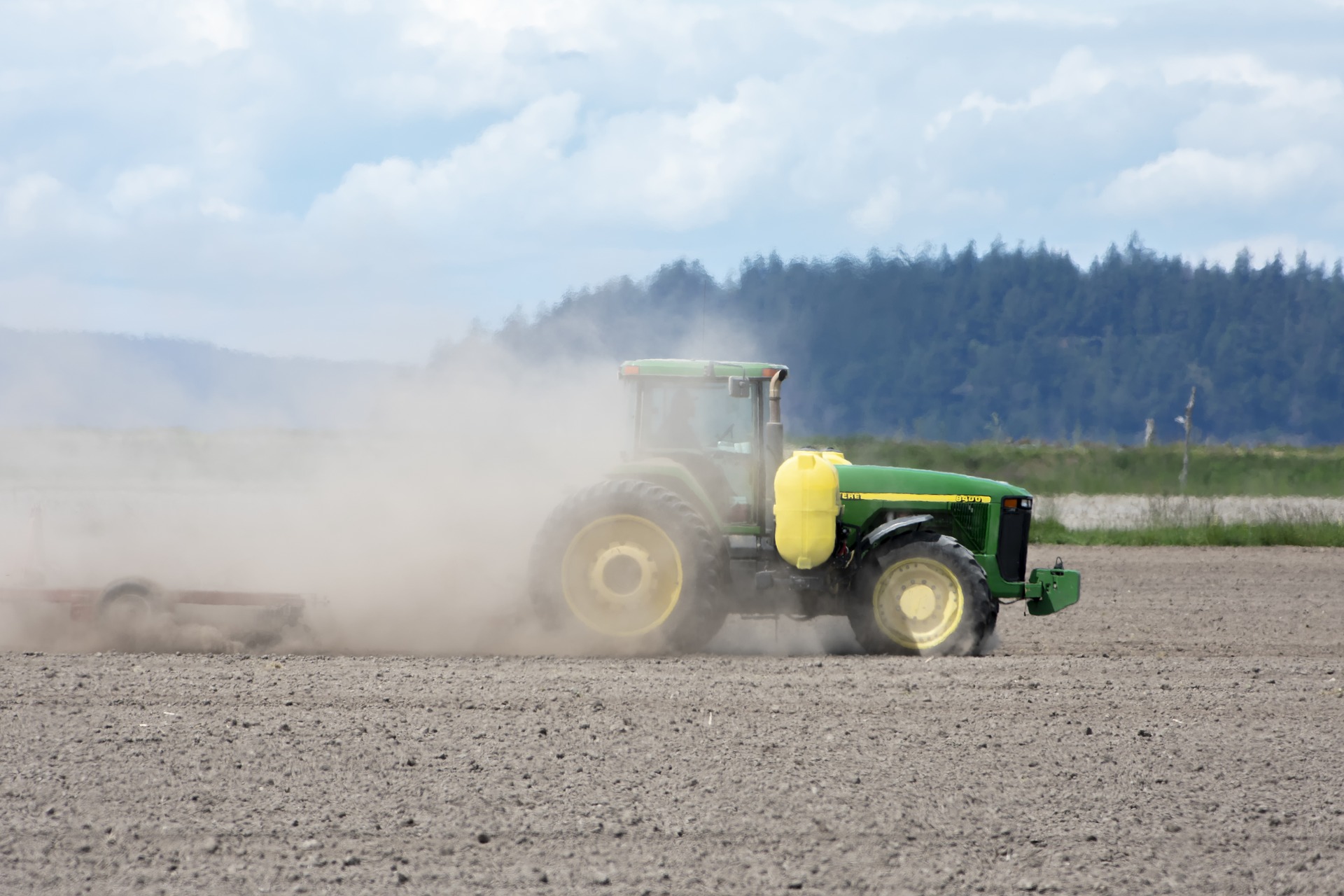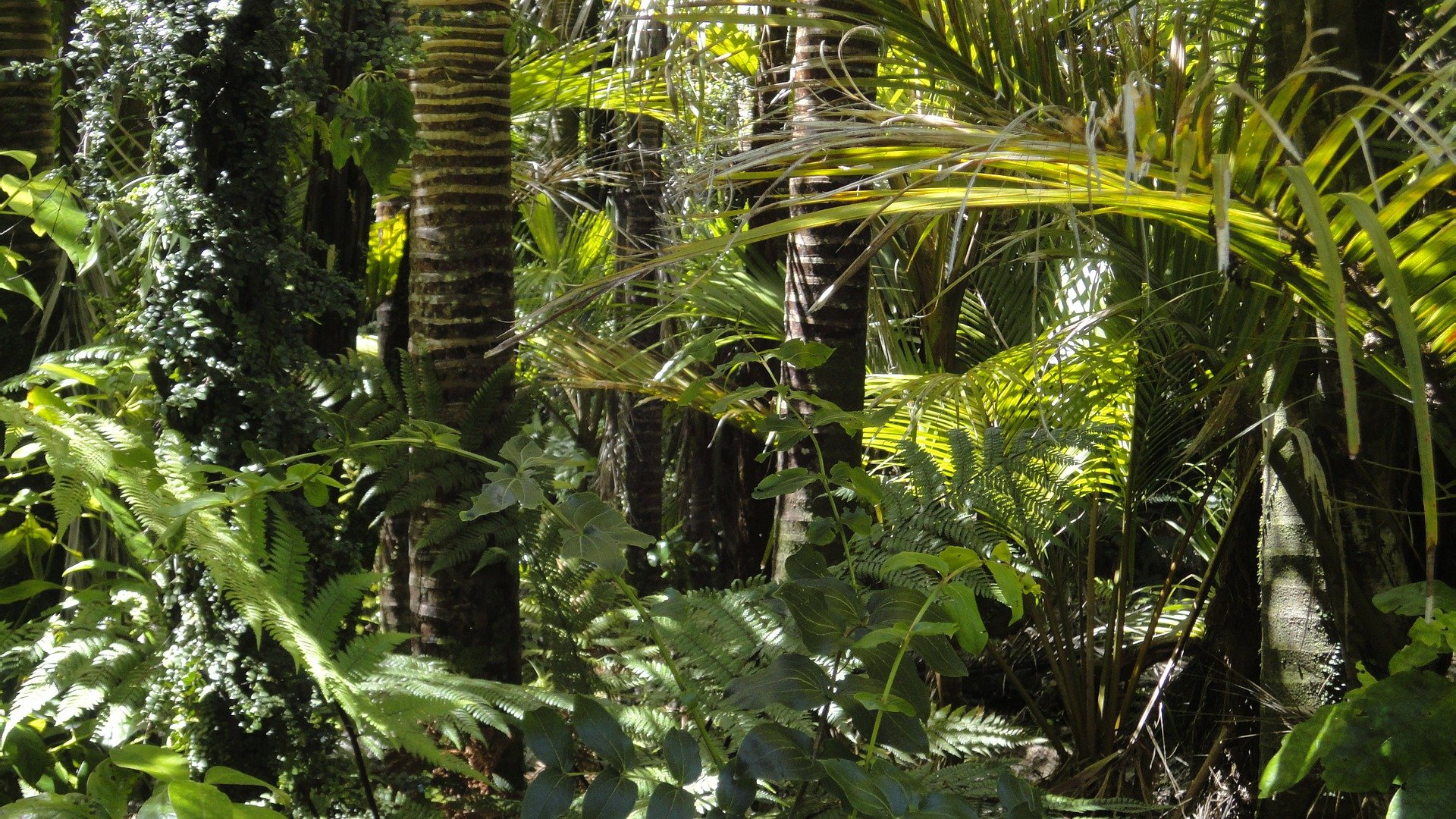Although technological advances have increased the efficiency of harvests, climate change harms food production worldwide and vice-versa. Climate change is an unstable shift in global climate patterns, resulting in unpredictable weather that can cause irregular storms and temperatures. Higher temperatures eventually reduce crops and foster the growth of weeds, pests, and diseases in agriculture.
According to Climate Change: Impact on Agriculture and Costs of Adaptation, agriculture will be negatively affected, with the following impacts:
- Food production revenue would decline for the most vital crops.
- Irrigated harvests across regions would be affected.
- Food production costs would increase – especially for essential crops such as rice, wheat, corn, and soybeans – impacting food prices for the final consumers. Although most of these grains are used to feed cattle, it would also affect the cost of meat.
- By 2050 the projected average calories available for consumption by the world’s population would decline compared to 2000 due to higher prices.

System description and the framing question
According to the Brazilian Institute of Geography and Statistics, Brazil, with a population of 211 million people, has agriculture as the base of the economy. Soy, sugarcane, corn, coffee, rice, orange, cotton, and tobacco represent most of the production of Brazilian agriculture. However, the negative effect of agriculture on climate emerges from market benefits and political interests. This blog focuses on the relation between people, governments, and the market economy to find a possible solution to the question, “how might farmers grow crops, preserve nature and still compete in the market?”
What is syntropic farming?
Syntropic farming is a type of agriculture that is rentable, regenerates the soil and climate using nature’s complex system. It follows an ecological succession of species, and the regeneration is by use. It tends to be independent of inputs, and irrigation is synced with the renewal of ecosystems.
Syntropy (antonym of entropy) is used by Ernst Götsch and it means that more energy is generated with the harvesting than spent in the sowing. The technique mimics nature, using local as well as nonlocal vegetation to restore the soil. The right choice of matching plants and spacing between them ensures symbiosis between vegetation, insects, and local animals.
Complexity frame
Understanding how the forest works and using natural ecological systems to grow woodlands and agriculture in the same field is a dynamic and self-sustaining procedure.
At present, the challenges in the environment and economy are large-scale production of food. The private sector is one of the main actors in this proposal. However, whether large or small, farmers are still individual players who need profit to survive in a competitive market that can be local or international. The present process of crop and harvesting into a large-scale scenario using syntropic farming could use the following strategies below:
1)PPPs and tax breaks:
The switch from traditional farming on a large scale to syntropic farming requires different types of equipment to facilitate the large-scale syntropic farmers, generating demands in several sectors, for example, product designers, engineers, and agroindustry machines makers suppliers. Therefore, Public and Private Partnerships between the private industry, universities (public or private), and tax breaks are an excellent proposal to solve the necessity of the new production, with different sectors such as the agriculture machinery industry to create and produce new appliances used in syntropic farming.
Large farmers see this as an opportunity for profit when it is proved that the agroforest technique costs less than traditional farming and eliminates the dependence of the farmers on industries where genetically modified seeds make them sterile, the cost of irrigation, and pesticides are zero.
2)Cooperatives:
Cooperatives are beneficial to farmers because they create a social relation that enables smallholders to achieve goals and control a specific market. From an economy of scale, the cooperatives can help smallholders by lowering taxes in their costs of acquiring unproductive land by lobbying in the congress for laws that aid their interests, as better and cheaper transportation, like trains, to make their products more competitive, also increase incomes by helping the smallholders with information, financial programs designed to syntropic cooperatives and empower the small farmers in the decision-making process for public policies. Additionally, convincing other smallholders to switch to syntropic farming and join the cooperatives.
All the goals that may be unreachable alone and are a common interest, not just between smallholders, but also environmental NGOs, or other players as students, civil society, financial institution destinate for agribusiness, ministry of agriculture and international market that searches for alternatives solutions for climate change can join forces to a local self-organized cooperative of small agriculturalists to make changes that alone would not be possible. Cooperatives also help smallholders to protect themselves from larger farms and have a voice against large industries.
3)Use of information and communication technologies (ICT):
Propagation of the syntropic technique and the creation of a new client’s niche.
It is essential to notice that our generation depends on connection systems that are integrated and complex. The syntropic farming technique is not well known. Framing this technique in a complex system helps us think outside the box and find unusual actors and unconventional ways to disseminate the information between farmers and customers.
The use of channels such as YouTube videos, Blogs, LinkedIn, Instagram, Facebook, TV reports, radio, soap opera, podcasts, and massive open online courses (MOOC) that are accessible by mobile phone to disseminate the information and techniques could be one solution to disseminate the information about syntropic farming and products to consumers, encouraging the consumption of syntropic food and creating a new niche of clients in the food industry. Also, it would allow farmers to be exposed to and learn about the existence of this technique in a MOOC for example.
Thus, it is essential to mention that Brazil, the largest country in Latin America, does not have cutting-edge technology, efficient means of transportation, and in the telecommunication field, given the lack of digital infrastructure, especially in the Amazon and rural areas. That is why traditional channels like radio and telenovelas, which are prevalent in the region and are transmitted by antennas and satellites, should be the vehicle to communicate and disseminate the techniques and instigate the customer to purchase a new eco-friendly product. However, once 5G arrives in the area, the strategies to propagate syntropic farming must adapt.
4)The creation of an international collaborative database.
To understand the process of syntropic farming it is necessary farming to integrate the knowledge of untypical vegetation that may or may not be local to recuperate the soil and harvest food. The use of “exotic” vegetation means plants that are not from the local ecosystem. The idea is to use exotic vegetation to regenerate the soil, which is one of the differentials of syntropic farming technique, compared to traditional projects of ecological restoration that aim to recreate and establish the ecosystems composed of native species.

The proposal of using a collaborative ICT tool to create databases is not new. For example, we use Wikipedia, an open-source collaboration encyclopedia with more than 40 million articles in 301 different languages for instant research. In 2005, Nature’s journal asked scientists to compare Wikipedia’s scientific articles to those in Encyclopedia Britannica. It results in Wikipedia, a free online encyclopedia that anyone can edit; it gets close to its science entries’ accuracy. Studies by The Guardian and several peer-reviewed academic studies also had tie results.
The initiative is creating two international collaborative, multilingual databases to promote the knowledge of various natural plants and processes that can be used in different parts of the world to cure plant disease and pests without using pesticides or genetically modified seeds.
At first, the idea is to create a database established in two problems, a)soil restoration and b)pests and diseases:
a) A database would be edited by farmers, biologists, biomimicry, physicists, ecologists, research centers, universities (public and private), and other actors worldwide that use different vegetation types to restore damaged soil.
b) A database of pests and diseases that natural resources can treat like plants, insects, and birds.

Conclusion
The knowledge of syntropic cultivation is not well known by farmers, climate change experts, agriculture specialists, and the general population. Other types of agribusinesses that are less or have no harm to nature may exist worldwide. However, the lack of knowledge and dissemination of those crop techniques for farming is one of the obstacles faced by researchers and public policymakers looking for possible solutions to preserve nature, best agriculture practices, and develop public policies that support the use of ecologically sustainable techniques.
Understanding different lenses as complexity frames methodologies help us explore various policies that can influence an effective and efficient solution to improve and encourage other agriculture techniques, such as syntropic farming that recovers damaged and unproductive areas, generates revenue for the farmers, and promotes reforestation. Additionally, it serves the consumer with authentic organic food produced in a way that helps reforestation. Taking everything into account, different sectors such as government, market, and civil society/consumers can target the same goals. Therefore, those three main actors are essential to creating possible solutions to a complex farming system.
If you would like to know more about Syntropic Farming and the Agenda Götsh, please check the references and spread the word with others. Now I would like to know your thoughts. Did you know about Syntropic Farming? What is your opinion about it and the possible solutions presented in this post?
References:
- Agência IBGE Notícias (2020). Em janeiro, IBGE prevê alta de 2,2% na safra de grãos de 2020. Available at : https://agenciadenoticias.ibge.gov.br/agencia-sala-de-imprensa/2013-agencia-de-noticias/releases/26844-em-janeiro-ibge-preve-alta-de-2-2-na-safra-de-graos-de-2020 [Accessed 12 Feb. 2020].
- Agenda Gotsch (2015). Life in Syntropy [Video]. Available at: https://www.youtube.com/watch?time_continue=919&v=gSPNRu4ZPvE&feature=emb_logo [Accessed 2 Feb. 2020].
- Agricultura, pecuária e abastecimento (s.f). Regularização da Produção Orgânica. Available at: http://www.agricultura.gov.br/assuntos/sustentabilidade/organicos/regularizacao-da-producao [Accessed 28 Jan. 2020].
- Agrofloresta do Futuro 29/49 (2016)- Fazenda da Toca | Pedro Diniz. Available at: : https://www.youtube.com/watch?v=mXKKnrT9lCQ [Accessed 2 Feb. 2020]
- Andrade, Dayana (2019). What is syntropic farming? Available at: https://agendagotsch.com/en/what-is-syntropic-farming/ [Accessed 2 Feb. 2020].
- Andrade, Dayana (2019). The hidden cost and purposes of technology. Available at :https://agendagotsch.com/en/the-hidden-costs-and-purposes-of-technology/[Accessed 2 Feb. 2020].
- Barnes, Mike on the Reich, Steve Reich entry (2005). The Guardian. Can you trust Wikipedia? https://www.theguardian.com/technology/2005/oct/24/comment.newmedia [Accessed 28 Jan. 2020].
- Fellet, João and Lima Felix (2021). Agricultores transformam deserto em floresta no Semiárido. https://www.bbc.com/portuguese/brasil-59157682 [Accessed 10 Dec. 2021]. Video : https://www.youtube.com/watch?v=MgknRntBFYo
- Foodprint calculation. Available at: https://www.footprintcalculator.org/result1 [Accessed 28 Jan. 2020].
- Giles, Jim (2005). Internet encyclopaedias go head to head. Accessed on: https://www.nature.com/articles/438900a [Accessed 2 Feb. 2020].
- Intergovernmental Panel on Climate Change – IPCC (2018). Summary for Policymakers. Available at: https://www.ipcc.ch/site/assets/uploads/2018/02/ipcc_wg3_ar5_summary-for-policymakers.pdf?fbclid=IwAR2wbXlANEyp2K7Phr0BWv14lby1lrddgeMZqMnPGhd2TaESn9XoU0SUHFA [Accessed 10 Feb. 2020].
- International Food Policy Research Institute IFPRI (2009). Climate Change Impact on Agriculture and Costs of Adaptation. Available at: http://www.fao.org/fileadmin/user_upload/rome2007/docs/Impact_on_Agriculture_and_Costs_of_Adaptation.pdf [Accessed 2 Feb. 2020]
- Instituto Brasileiro de Geografia e Estatística (IBGE). População do Brasil. Available at: https://www.ibge.gov.br/apps/populacao/projecao/box_popclock.php [Accessed 2 Feb. 2020]
- Krauss, C., Yaffe-Bellany, D. and Simões, M. (2019). Why Amazon Fires Keep Raging 10 Years After a Deal to End Them. [online] Nytimes.com. Available at: https://www.nytimes.com/2019/10/10/world/americas/amazon-fires-brazil-cattle.html [Accessed 12 Feb. 2020].
- Natalie Wolchover (2011). How Accurate Is Wikipedia? Available at: https://www.livescience.com/32950-how-accurate-is-wikipedia.html [Accessed 5 Feb. 2020].
- Peschard, Karine Eliane (2019). The conversation. Monsanto wins $7.7b lawsuit in Brazil – but farmers’ fight to stop its ‘amoral’ royalty system will continue. Available at: http://theconversation.com/monsanto-wins-7-7b-lawsuit-in-brazil-but-farmers-fight-to-stop-its-amoral-royalty-system-will-continue-125471 [Accessed 10 Feb. 2020].
- Produção Agropecuária. Embrapa. Available at : https://www.embrapa.br/macrologistica/producao-agropecuaria?fbclid=IwAR2KmVGRyXsSrBYrMYIZxvCRXHseITu9zEoA3qIC_cjoK8j2pALPyXQiVvU [Accessed 7 Feb. 2020].
- Porvenir Design (2019). “What is Syntropic Farming: A Permaculture Perspective. Available at: https://www.porvenirdesign.com/blog/2019/7/24/1bufd9zncys2tlph3qmmkz57ncqgsq [Accessed 25 Nov. 2021].
- Ruff, Julia (2018). Beyond agroforestry? An introduction to syntropic farming. Available at: https://www.arc2020.eu/beyond-agroforestry-what-is-syntropic-farming/ [Accessed 11 Feb. 2020].
- Séries Especiais (2019). Soja lidera valor de produção na agricultura com R$104 bi. Available at: https://agenciadenoticias.ibge.gov.br/agencia-noticias/2012-agencia-de-noticias/noticias/26036-soja-lidera-valor-de-producao-na-agricultura-com-r-104-bi [Accessed 10 Feb. 2020].
- The nature education. Knowledge project. Sigurdur Greipsson Restoration Ecology. Available at: https://www.nature.com/scitable/knowledge/library/restoration-ecology-13339059/ [Accessed 2 Feb. 2020].
- United Nations Development Programme. 13 Climate action. Available at: https://www.undp.org/content/undp/en/home/sustainable-development-goals/goal-13-climate-action.html [Accessed 2 Feb. 2020].
- Wikipedia, the free encyclopedia. Available at: https://en.wikipedia.org/wiki/Wikipedia [Accessed 4 Feb. 2020].
- World Bank. Available at: https://climateknowledgeportal.worldbank.org/ [Accessed 10 Feb. 2020].
- World Intellectual property organization. Available at: https://www.wipo.int/geo_indications/en/ [Accessed 25 Jan. 2020].


